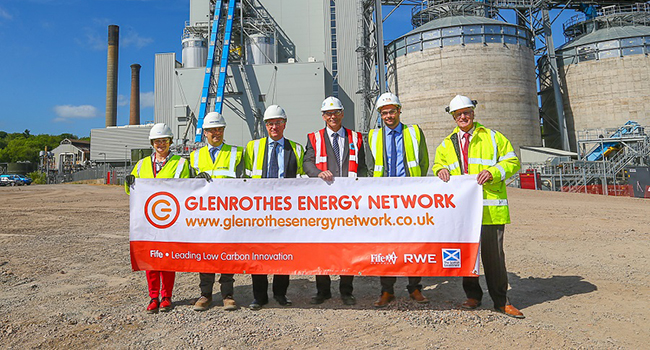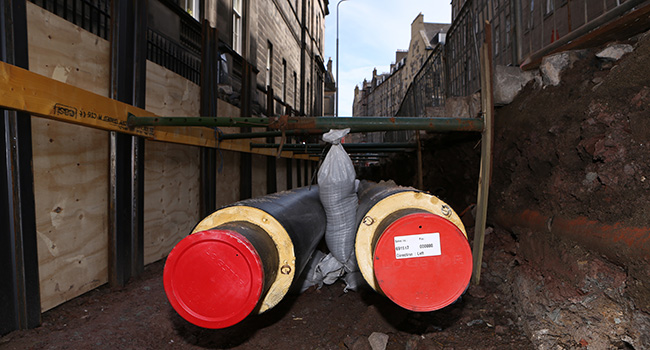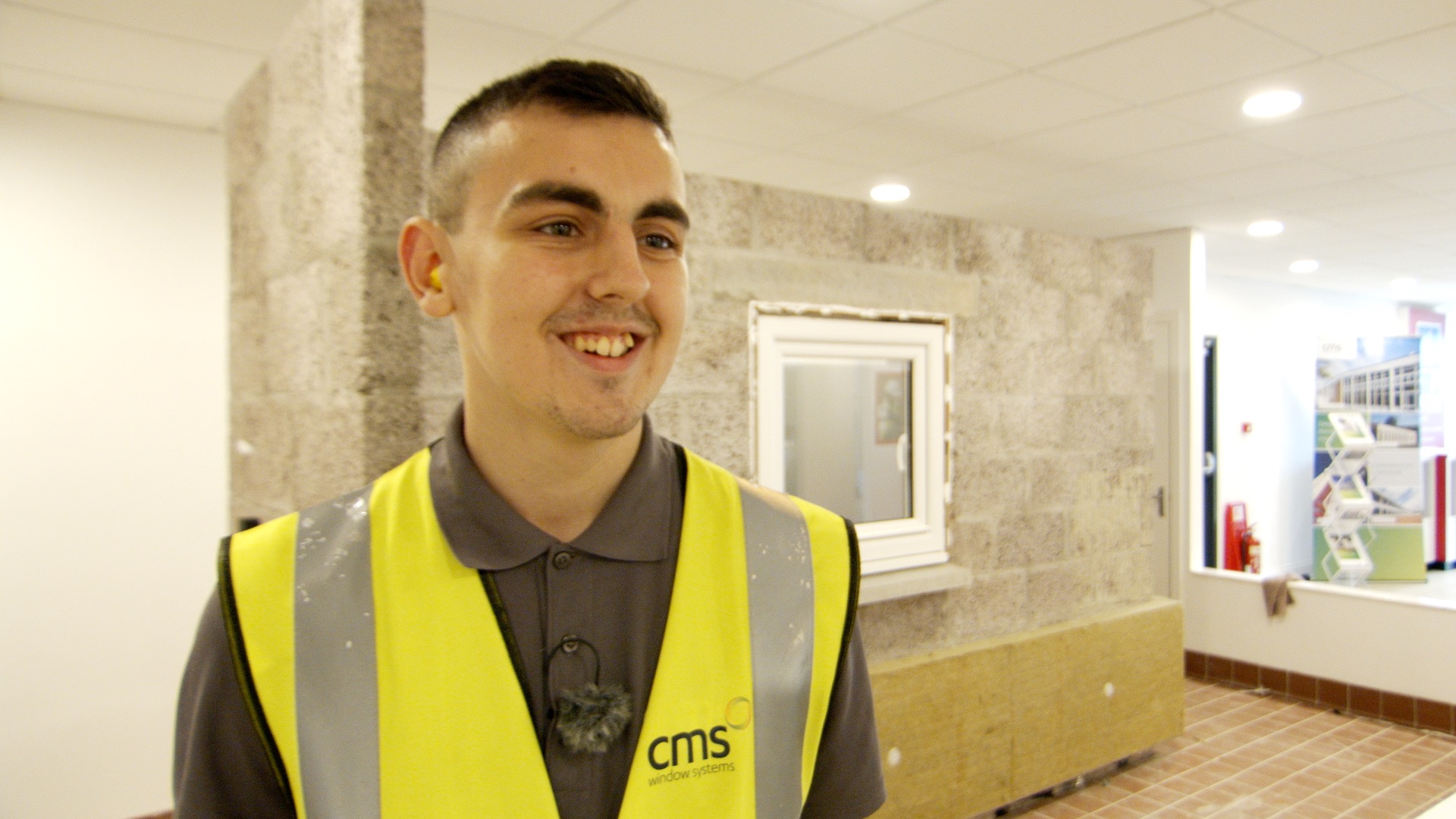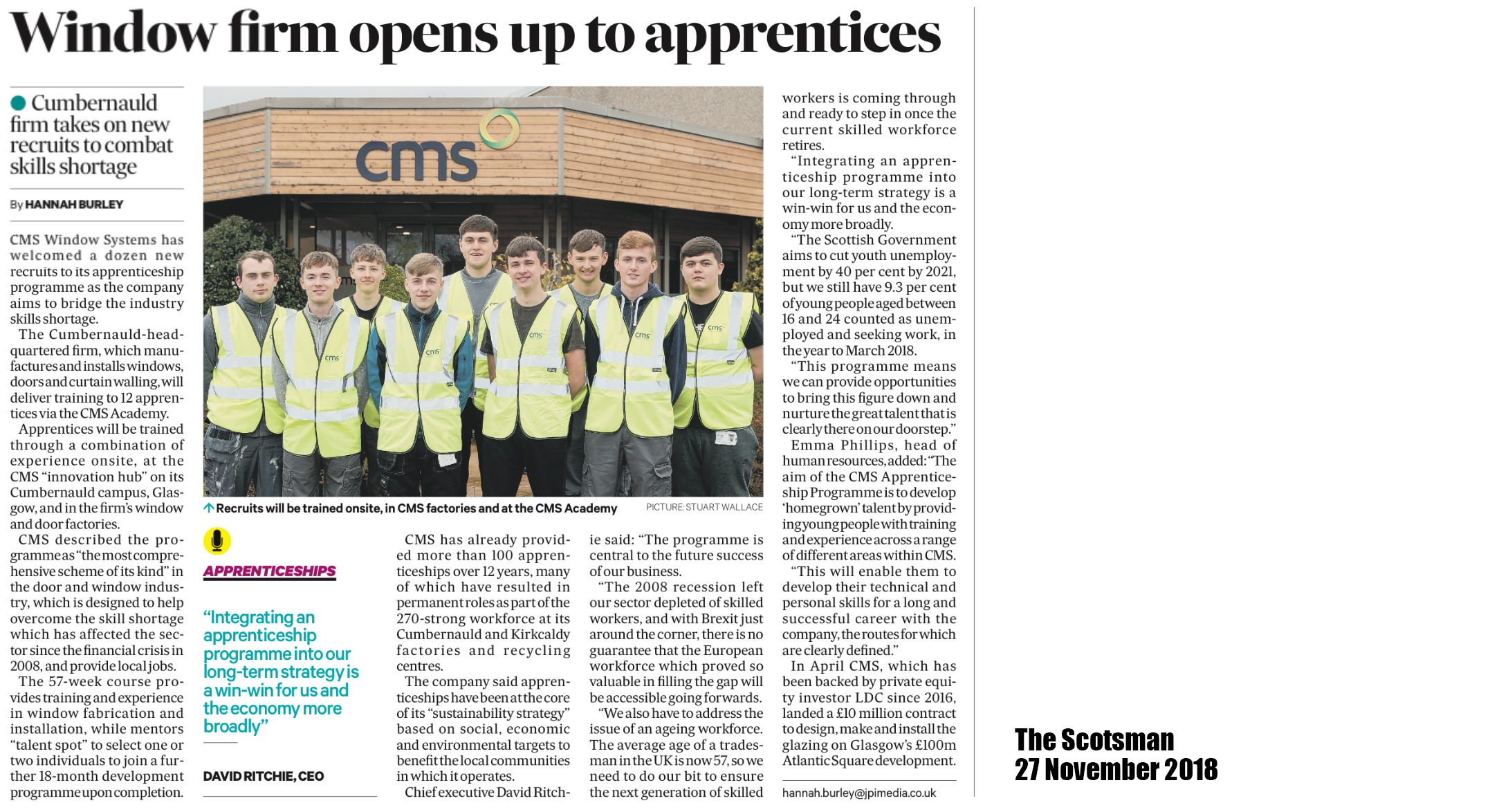The delivery and use of energy and heat is an area of rapid change that can bring economic growth and improved environmental performance to the whole of Scotland.
SFT is at the heart of that work and our focus is on supporting Scotland move to a low carbon economy and reach its climate change targets. Not only does our work generate cost and carbon savings, but it supports local economic development and improves the quality of public buildings.
One area that we are heavily involved is district heating. District heating is like a central heating system in your home, but on a much larger scale.
It is a way of delivering heat and hot water to many buildings at the same time. Heat is generated at a central energy centre, distributed through a network of highly insulated underground pipes and supplied to homes, businesses and public buildings.
Heating buildings in this way provides a range of benefits, including the ability to use large-scale renewable or low carbon heat sources, for example capturing waste heat from power generation or industrial processes. This improves energy efficiency, reduces our reliance on fossil fuels (such as natural gas) for heating, and reduces carbon emissions. District heating can also cut heating bills, which helps alleviate fuel poverty.
As district heating is still a relatively undeveloped sector compared with gas and electricity markets, we are working with local authorities to help them identify and manage potential risks and advise on the best business model and procurement route for each project.
We have been working with Fife Council and its project partner RWE to develop the Glenrothes Energy Network. This is one of a number of district heating projects supported by Scottish Government’s Low Carbon Infrastructure Transition Programme (LCITP), of which SFT is a delivery partner.
When operational next year, surplus heat from RWE’s biomass combined heat and power plant in Markinch will flow through the network and supply low carbon heat to council buildings, businesses and homes across Glenrothes. Importantly, it will also contribute to climate change targets, including Fife Council’s goal to reduce carbon emissions by over 40% by 2020 and 80% by 2050.
Construction is well underway, with many people working and living in Glenrothes set to benefit from the positive outcomes the district heating scheme will deliver.













